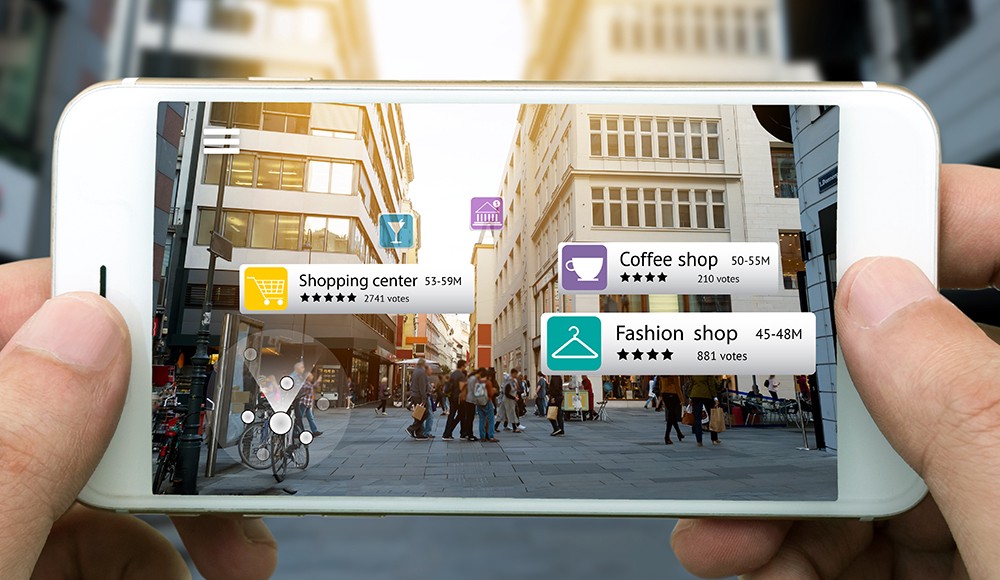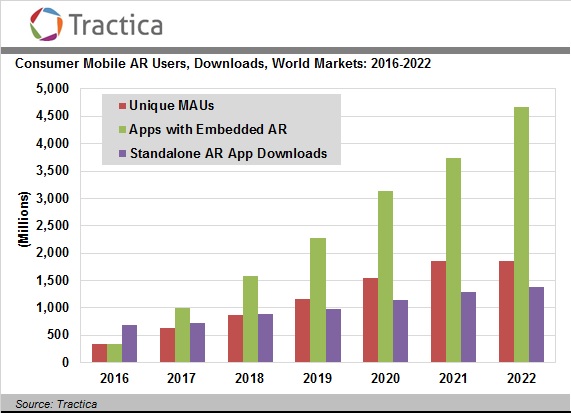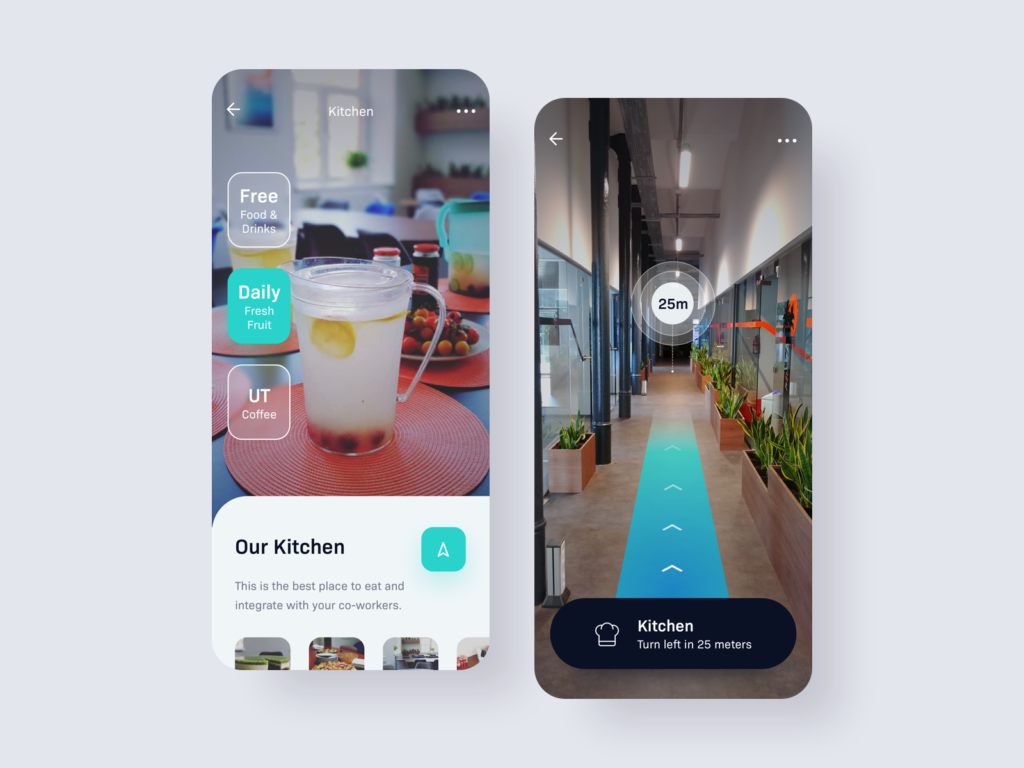In the world of technology, the concept of Augmented Reality is trending right now and most businesses out there are keen on cashing into the frenzy created by augmented reality apps. However, many of them often face this common issue of not having even the vague idea regarding the development cost of an Augmented Reality Mobile App. So, here in this blog, we have shed some light on this common concept.
Going by the audience’s enthusiasm towards Augmented Reality, it is expected to hit an all-time high by 2020. Latest reports from Digi-Capital, states that“AR is soon going to be thrice as profitable & popular as Virtual Reality technology, especially for the enterprise user. In fact, by the year 2020, AR will be expectantly growing by 35% with estimated revenue to be reaching $100 billion”
Thus, Augmented Reality is the future. And thanks to the gaming industry, shipments of AR glasses are forecasted to reach 5.4 million units by 2020 after all this industry does enjoy faithful customers. Interestingly, around 500 million people already have used or been exposed to the AR technology, without even knowing it.
Meanwhile, sectors like Travel, Entertainment, Education, healthcare, Public Safety have already expressed enthusiasm for the AR technology and are set to take big steps in AR app development. But most of them are faced with this common question, “How much does it cost to develop an augmented reality app?“
So, here in this blog, we will help you the finding all about the AR app trend, it’s cost, and the development process. Here, let’s begin:
Find your niche with Augmented Reality App
Prominence enjoyed by AR apps is very much evident. As per App Annie’s report, changes began to happen sometime last year in September. So, during the entire year, there were less than 300,000 downloads, but as soon as AR apps hit the market, it has reached more than 750,000 downloads now.
In fact, biggies like Google & Facebook have taken the first steps already to cash-in to the opportunities augmented reality brings. This certainly is going to be fun and a lot more. So, let’s explore how AR will change the game in the coming times.
Augmented Reality trends – A lot more in store
Many bets are being placed on AR technology, like what impact it will have on the market and how it will be integral to brand development. Like this, some of the hot topics for discussion are:
Will it affect the audience’s enthusiasm for Virtual Reality (VR)?
Figures reveal that the three-month revenue of the Pokemon Go (AR game) was a lot more than the entire VR market in the year 2016. This huge success of Pokemon Go made a lot of businesses around the world explore in deep the AR technology, and we may witness this tendency to leave its primary stage and move to further expansion in the coming times.
Brands may benefit big way
Many successful brands like IKEA, ZARA, and many else, have already integrated AR technology and this number is expected to reach an all-time high in forthcoming days. After all, every business keeps searching for new ways to interact with their audience and enchant them, and AR technology offers it all.
The launch of ARCore & ARKit frameworks by Google & Apple respectively opens a lot of prospects for the business ideas. Hence, now businesses from any sector can create their own solution for a specific platform and then share it with a myriad of mobile users.
Image Source Tractica
Smartphones and Augmented Reality go hand-in-hand
To bring together AR with smartphones, all needed is a “hero” mobile device with an enduring battery and mobile connectivity, along with an app-store ecosystem and cross-subsidization and they are good to go. Meanwhile, another problem that needs is a solution is the availability of “hero” devices. Most of our modern smart mobiles are not fully-equipped to provide an amazing AR experience to the users, and the first attempt of sorts was taken by Google with its ZenPhone AR & Lenovo AR phone. We expect that in the future there will be many more of these attempts.
AR to invigorate the replacement cycle
Replacement cycle is termed as a period between purchasing a new product, here it is a mobile device. So earlier, people replaced smartphones in every 18 months, however now the period gets longer and it’s about three years. This certainly has left mobile production companies devastated.
However, now AR has brought in the ray of hope to help mobile corporations enhance their sales. After all, now mobile companies will launch new devices capable of providing complete AR experience to the users. This is certain to entice users as they would get the entire functionality package without spending an extra penny on the purchase of the AR feature.
Types of Augmented Reality Apps
So, you have made up your mind to develop an AR app for your business, now the next thing you must know is what kind of AR app you can develop to reap the maximum benefits. There are five types of AR apps, like:
Projection-based
This AR app will project digital images on the physical objects in a physical environment. This type of app can be interactive & project a digital chair in your room corner. Meanwhile, it may also be non-interactive and it can be used in developing a projection of the objects that can be positioned and then viewed in detail.
Outlining
This AR-type uses object recognition and appears to be little like projection-based AR. Like, here AR recognizes the road boundaries whenever the user is parking their car in the dark. Besides, it’s useful in the engineering & architecture sector to outline pillars & buildings.
Recognition-based AR
This type of AR fetches information by scanning QR code or an image and then comes to life. For instance, iGreet, which uses this type of AR. What it does is that it will recognize AR markers and once the marker is identified, then it will replace it with a corresponding object.
Superimposition-based
This AR-type will use object-recognition to replace the entire object or maybe a part of it via an augmented view. In order to understand this more clearly, play the FPS game. Here how the soldiers can use advanced military equipment by showing infrared-view, radioactive-view, night-vision, etc. and all of this is superimposition AR. This AR-type can do wonders in the healthcare arena.
Location-Based
This type of AR app will use your smartphone’s location detection feature. Hence, for those on keen creating a travel app based on AR, will be able to assist travelers in exploring new and amazing places. This app will use your location by reading your smart device’s accelerometer, compass & GPA, and then it will provide accurate information about what you are searching.
You can choose the AR-type as per your business requirements and as per the type of AR app you choose, the development cost will vary.
What are the common features that should be integrated into the AR app?
- Login: From this section, the user can register and login to the app by using login credentials, or s/he may also log in using his/her social networking credentials.
- Multiple-Language support: It is vital to provide this multiple-language support feature in your AR app so that users from all across the world can easily use your app.
- Analytics: Again a crucial feature, as it allows to boost user-engagement with the app and possibility of users recommending it to other people within their circle of family & friends.
- Chats & forums: Direct-interaction with the users never ceases to help, as this will not only enhance user engagement with the app but will also be useful to clarify any issues or problems they might be facing with the AR app.
- Payment Integration: This is an important feature of the Augmented Reality App, as it allows the users to make in-app purchases and this will be integral in boosting businesses revenues.
Augmented Reality App Development Process:
Here, we have presented the stages that the AR app development process goes through and it will be crucial in determining the development cost of an AR app.
Choose SDK
Usually, SDKs for the advanced solutions based on Augmented Reality are paid. Hence, the usage fee is included in the total project cost. These SDKs simplifies the code writing process (which is crucial when developing complex apps that involve particular hardware capabilities of smartphones – like accelerometer, GPS, gyroscope, camera, etc.) The most prominent SDK are Wikitude, D’Fusion, Vuforia, Metaio, ARMedia & ARToolKit.
Planning the Future App
Next comes planning the future app which is determined by the collection of Project Documentation, which involves a comprehensive guide defining the work of development team, clear definition of roles and division of responsibilities)
Project Approval from Customers
This step requires the project manager to closely interact with the customer, discussing entire project details, even the trivial ones (based on the engineered documentation), defining the execution process and then agreeing on the final app development cost. Factors that will be directly influencing the cost will be the need for the integration of third-party APIs, increased security-provision, scalability, database binding, etc.
Coding
The process of writing code is certainly the most time-consuming & difficult process. Below, we’ve mentioned several basic AR-based software features that differ in implementation and hence the cost vary.
Gyroscope data processing
Using the data captured by gyroscopes present in the smartphone is certainly the easiest way to create AR-software. This method doesn’t require purchasing licenses for the SDKs.
GPS data processing
AR apps not just rely on the conventional GPS data, but also on Assisted GPS technology, which enhances geolocation precision through Wi-Fi & cellular connections and also capabilities of the inbuilt compass.
SLAM
Simultaneous Localization & Mapping apps are considered to be most accurate and are efficient at processing data collected from numerous sensors in conjunction (like accelerometer, gyroscope, GPS, etc.) and can draw a 3D model over the surrounding reality. Here, markers are of no use.
Markers
Marker creation & processing routines tend to be the highly implemented AR software feature. Meanwhile, the markers are of various types, like it starts with basic geometric shapes (QR code) and ends with complex shapes so to distinguish objects such as human faces & their individual features. Event processing is the most difficult feature here. For each type of recognition, developers will require connecting special tools from SDK and describe a separate code module.
Added Functionalities
Apart from basic features, modern apps also require additional features to make the app intuitive & convenient for the users as well as competitive to carve a niche in the market. This requires functionalities like access to the smartphone hardware resources (gallery, contacts, etc.), signing into the system via social network APIs, switching locales, connecting e-commerce tools, push notifications and a lot more. For a game app, various other features like audio effects, ratings & achievements, video player, etc. also need to be integrated. This additional feature will certainly add to the cost of the app.
Testing
No product can be released without proper testing (by in-house Quality Assurance team (alpha testers) as well as by the volunteers (beta testers). This entire process may take up to months and in case any serious bug is detected, then the app is returned to developers for revision, and then is tested again.
Maintenance
With this stage, the app development process comes to an end. This step involved app upload in the app stores (Apple Store or Google PlayStore), app promotion in search engines (via Adwords), providing user support and regular updates of the launched app.
We are also recognized as a top Software and Website Development Company on DesignRush
Next comes, determining the factors affecting cost.
What factors influence the Development Cost of an AR app?
Here we have outlines some influencing factors that affect the cost of Augmented Reality App Development.
App Design
The AR app’s design, consisting of display & user-interface (UI) also influences the cost. The more captivating the design, the more money needs to be spent. However, you can think of it in this way, the more captivating the design, the more time users will spend with the tap, and this means more monetary gain.
Features
Features of an app will majorly influence the cost of the AR app. App’s technical specifications, be it list-based or data-based app, or the ones with/without a server or API components affects the cost.
Complexity
The more complex the app is, the more it will cost. In the case of web apps, they require a simple interface, whereas smartphones & tablets need more complex one, hence the cost is affected. Also, in the case of smartphone apps, the ones developed on iOS will be cheaper as compared to Android apps, owing to the complexity of Google’s app development platform.
Business Model
The business model again influences the cost of mobile apps, like whether the app is free-to-download or paid-app? Are there in-app purchases options? Does the app need full e-Commerce functionality? All these factors will affect the development cost of your app.
Platform
The AR app’s functioning on a number of platforms affects the development cost, like whether the app will be available on Apple iOS for both iPhone & iPad, Android, Desktops. Thus, the app development cost will vary as per the platforms were chosen.
Augmented Reality App Development Cost
This tends to be a major factor influencing the augmented reality mobile app development cost, “Choosing the app development company“. Big-shot firms will certainly charge more, while the moderate app development firms will comparatively be cheaper. Here, the region where the app development firm falls in is also the determining factor in the app development cost.
The AR app development rates vary as per the region where app agency falls in. Like in the US & Canada, they charge from $40-$240/hour, and in Western Europe, it is $40-$180, whereas $25-$70 in Eastern Europe. Meanwhile, in India, they charge $50-$70.
Ultimately, considering all the factors, the average AR app development cost in all probability is certain to cost somewhere around $30000-$150,000. However, in extreme cases, it may even reach $2,500,000 (mostly in case of the game app).


















